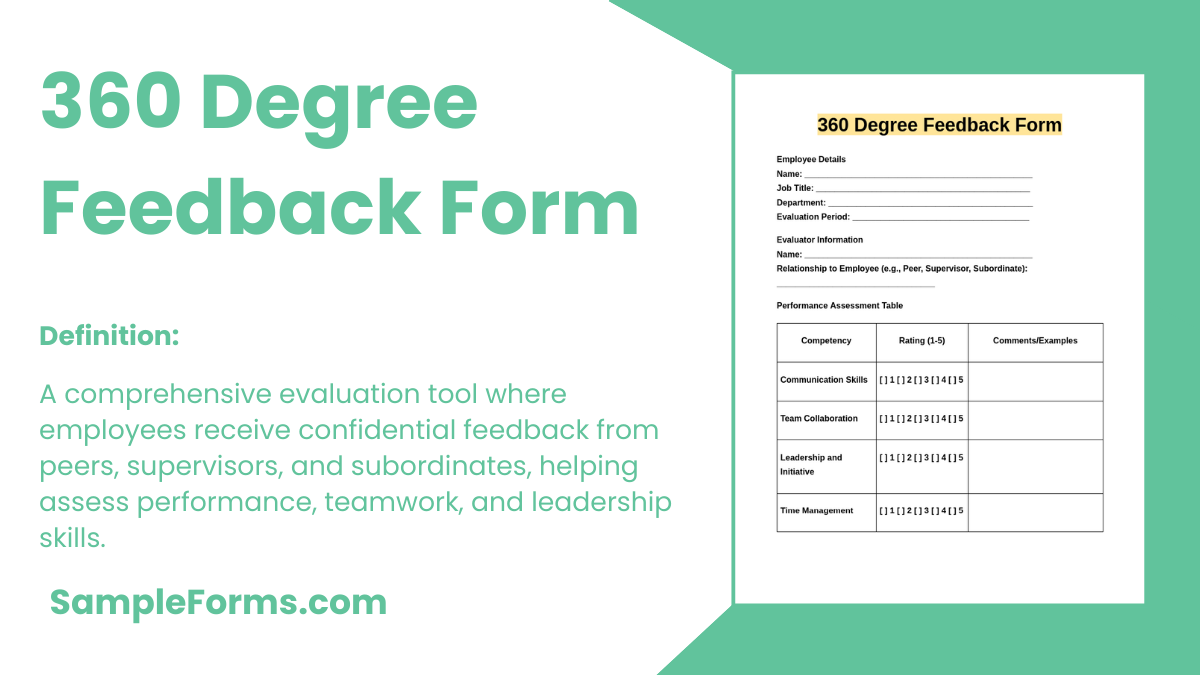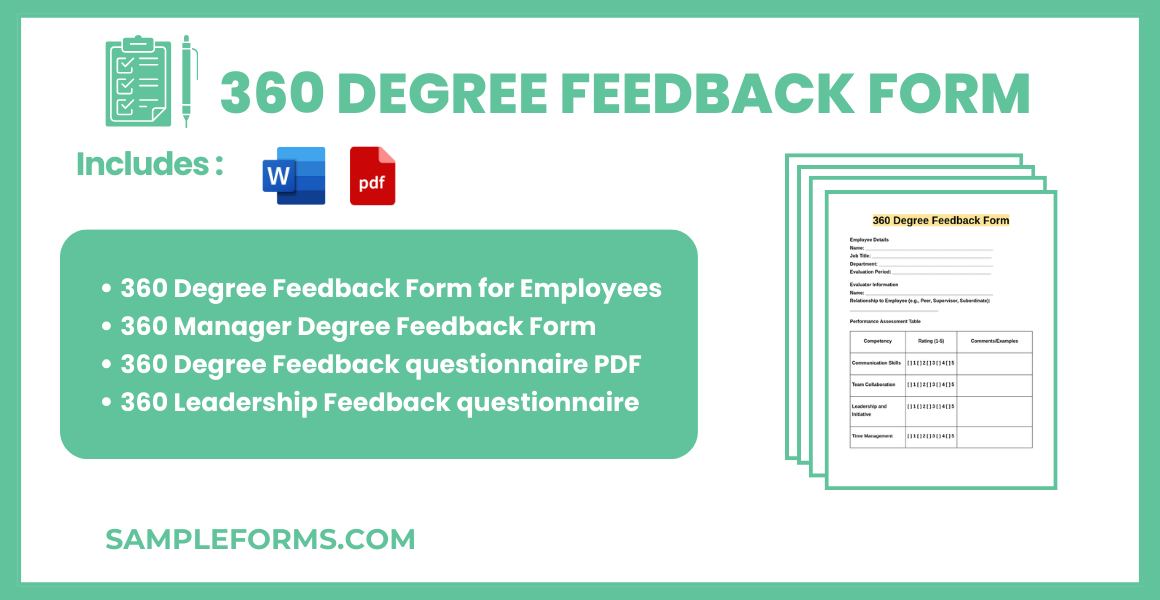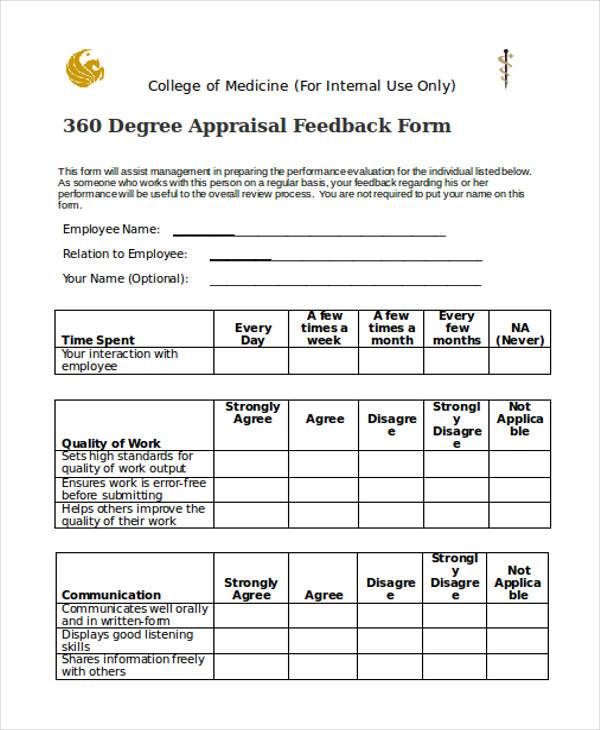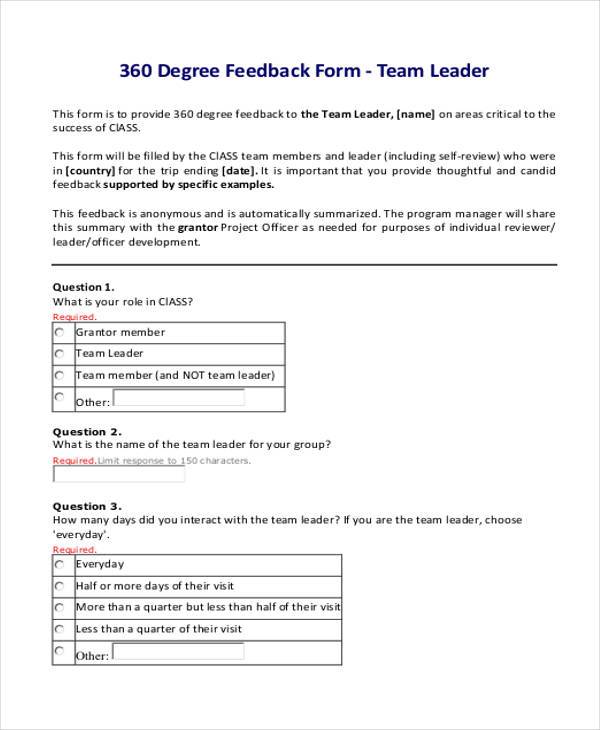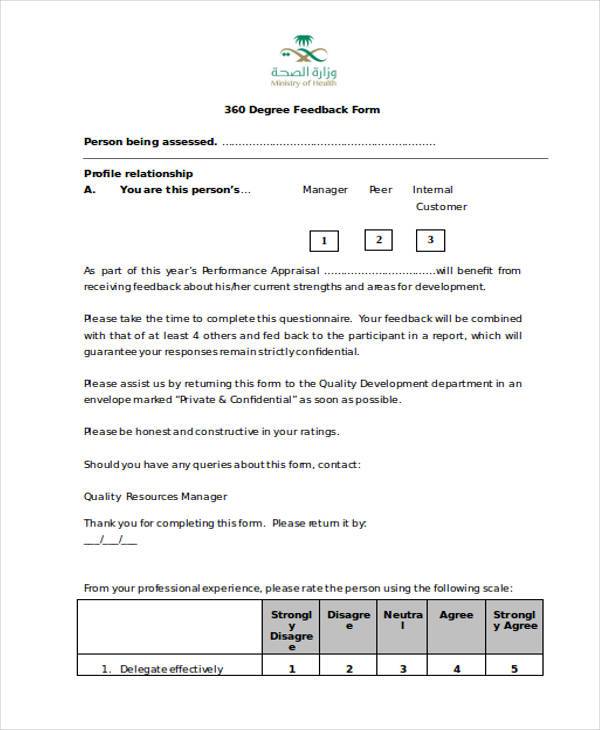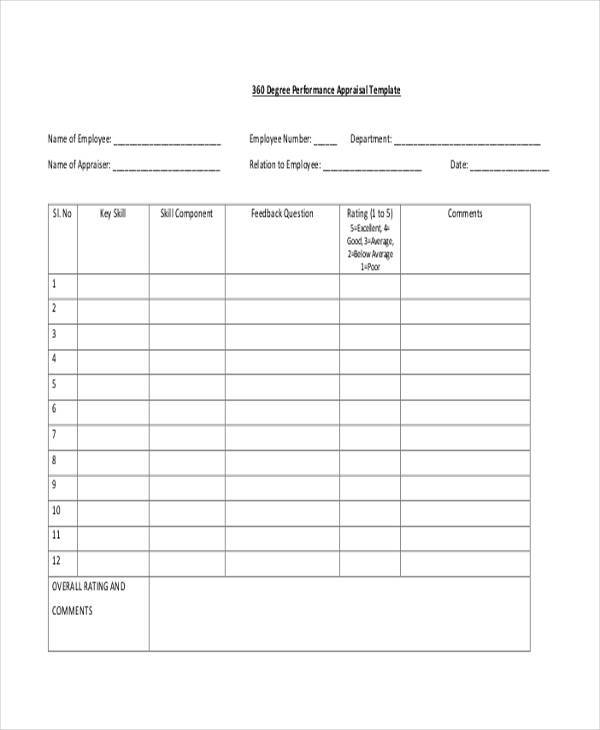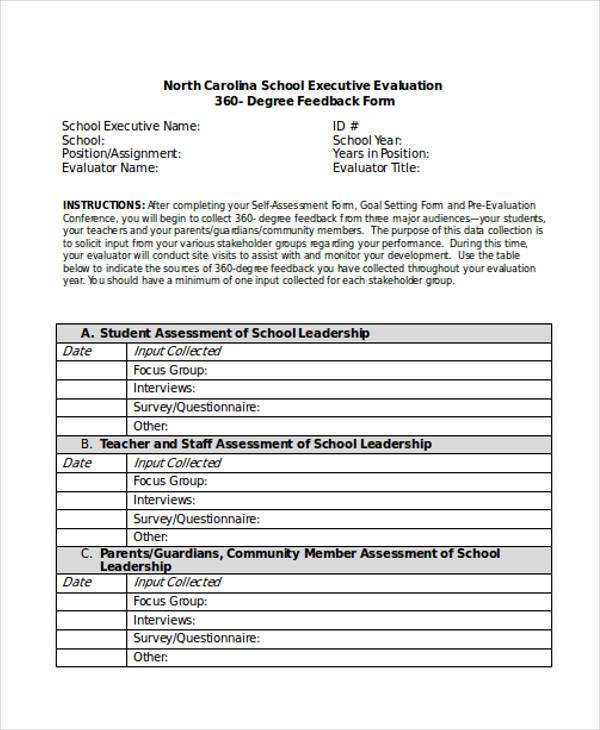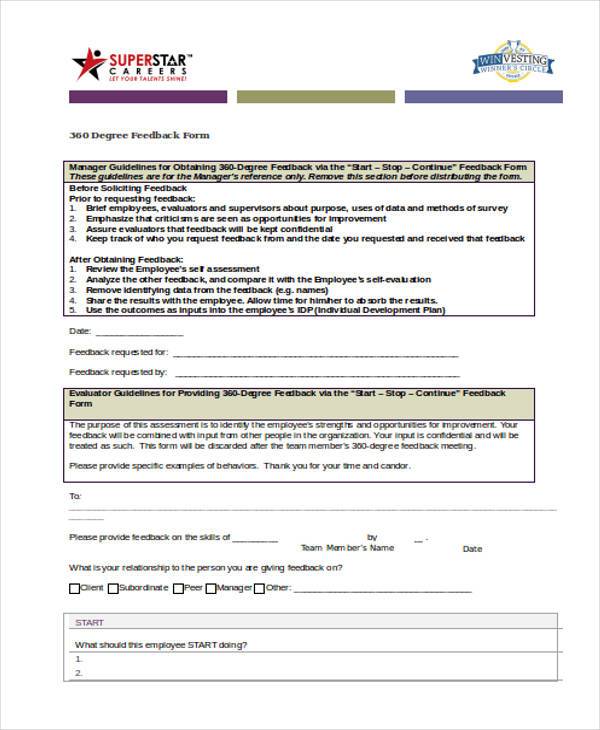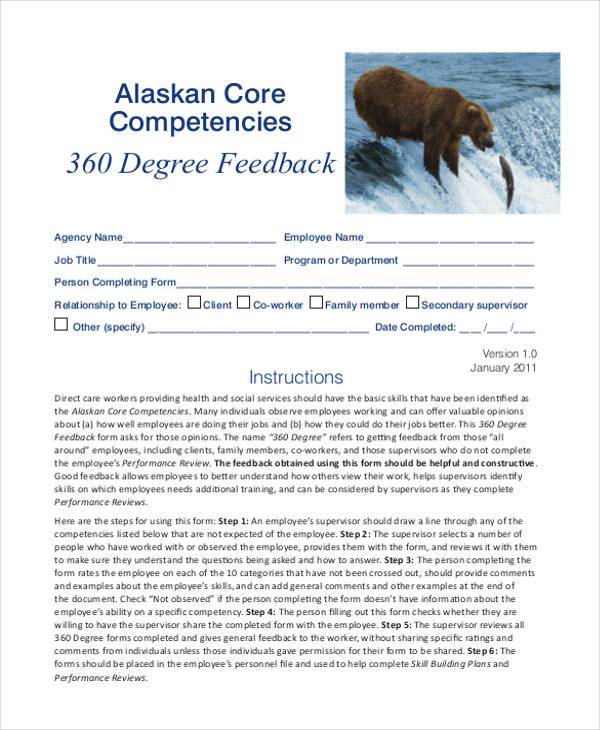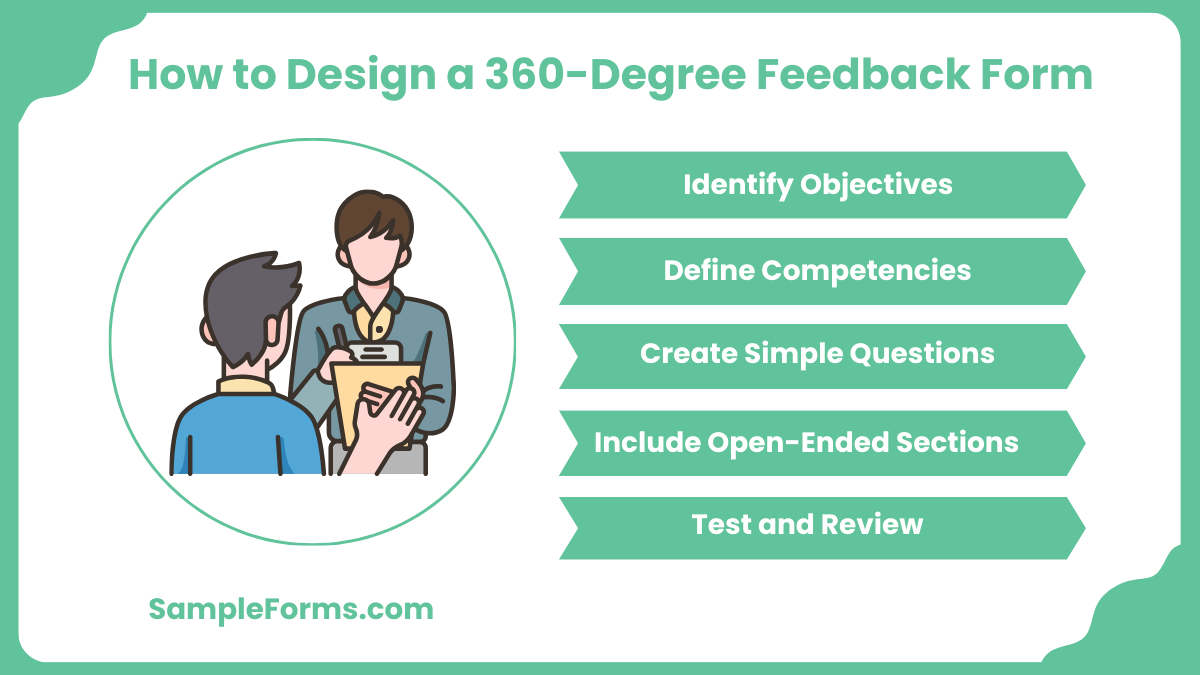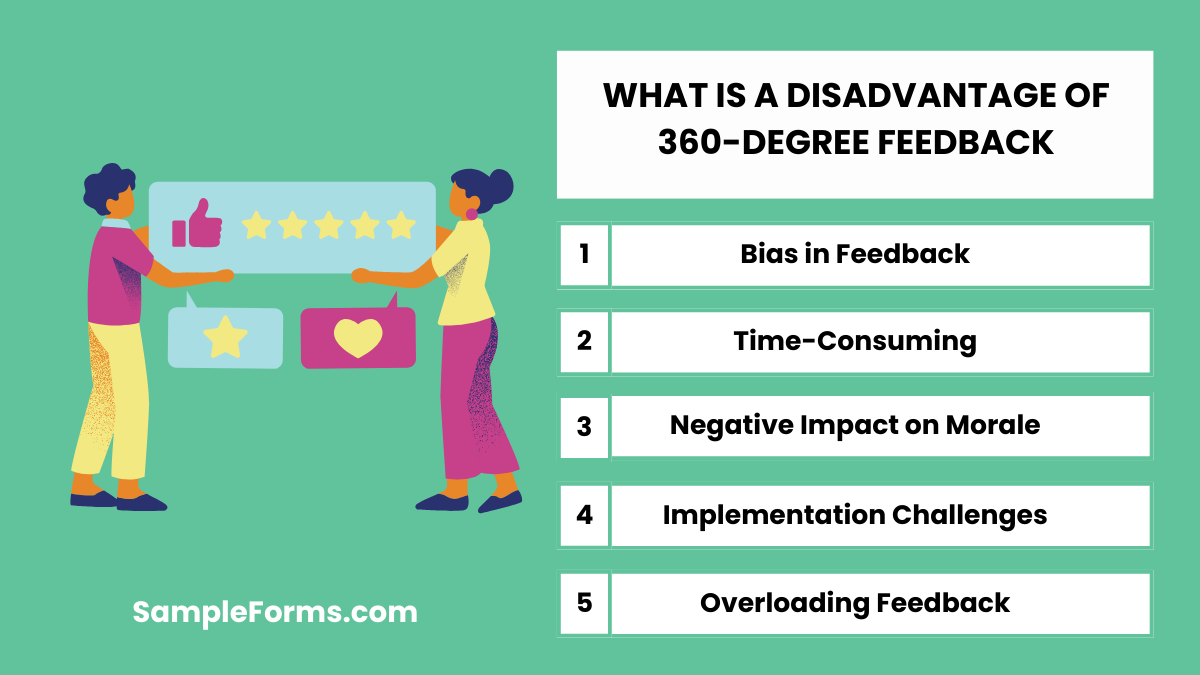A 360 Degree Feedback Form is a comprehensive evaluation tool that collects feedback from multiple sources, including peers, supervisors, and subordinates. This holistic approach helps assess an individual’s performance, collaboration, and leadership qualities. The Feedback Form is designed to be objective, confidential, and actionable, enabling employees to understand their strengths and identify improvement areas. Whether for annual reviews or developmental planning, a well-structured Form for 360 Degree Feedback process drives personal and organizational growth. This guide provides examples and tips for creating effective forms tailored to your workplace needs, ensuring maximum impact and engagement in feedback processes.
Download 360 Degree Feedback Form Bundle
What is 360 Degree Feedback Form?
A 360 Degree Feedback Form is a structured tool used to gather comprehensive feedback about an individual’s performance from colleagues, managers, and subordinates. It provides a well-rounded assessment, focusing on communication, leadership, and collaboration. This process ensures unbiased feedback, allowing individuals to understand their strengths and areas for improvement. The form is integral to employee development, promoting self-awareness and fostering professional growth.
360 Degree Feedback Format
Employee Details
- Name: _________________________
- Job Title: _________________________
- Department: _________________________
- Evaluation Period: _________________________
Evaluator Information
- Name: _________________________
- Relationship to Employee: _________________________
Performance Assessment
- Communication Skills: _________________________
- Specific Example: _________________________
- Team Collaboration: _________________________
- Specific Example: _________________________
- Leadership Abilities: _________________________
- Specific Example: _________________________
- Problem-Solving: _________________________
- Specific Example: _________________________
Strengths and Achievements
- Strength 1: _________________________
- Strength 2: _________________________
- Major Contribution: _________________________
Improvement Areas
- Improvement Area 1: _________________________
- Improvement Area 2: _________________________
- Suggested Training/Development: _________________________
Overall Feedback and Recommendations
- Overall Performance Rating: _________________________
- Additional Comments: _________________________
Signature
- Evaluator Signature: _________________________
- Date: _________________________
360 Degree Feedback Form for Employees
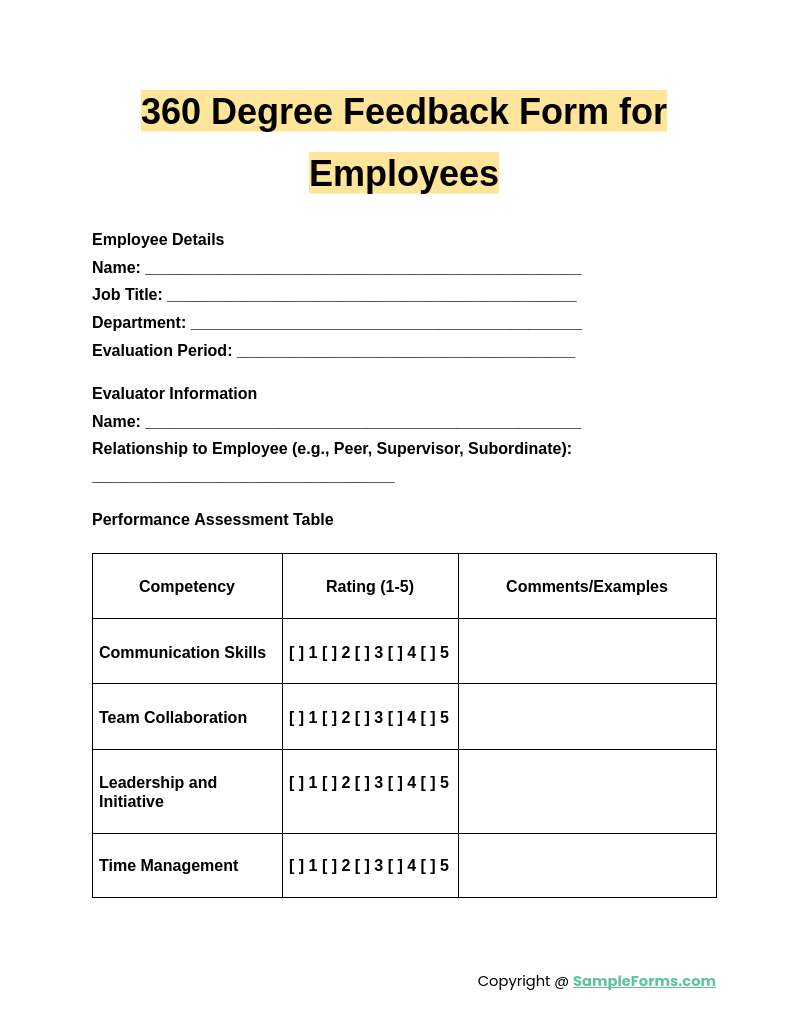
A 360 Degree Feedback Form for Employees evaluates individual performance by gathering input from peers, supervisors, and subordinates. Similar to a Photography Feedback Form, it provides detailed insights for enhancing teamwork, communication, and overall effectiveness.
360 Manager Degree Feedback Form
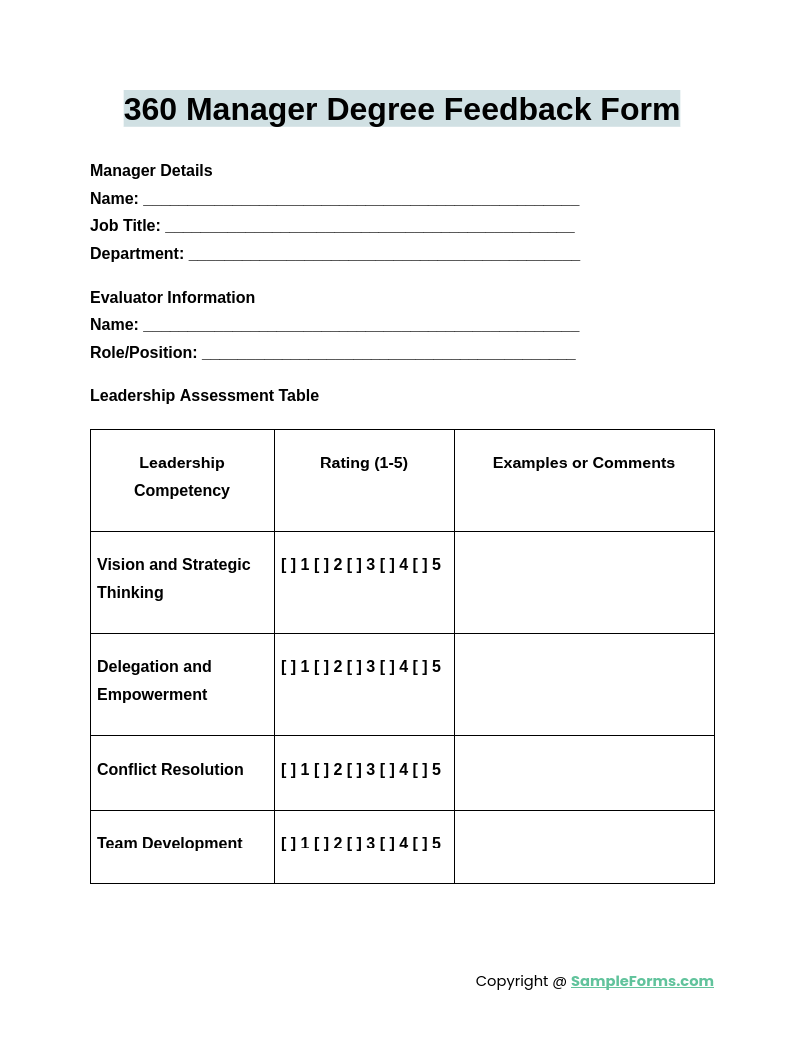
A 360 Manager Degree Feedback Form assesses leadership skills by collecting diverse feedback on decision-making, delegation, and team-building. Comparable to a Library Feedback Form, it ensures comprehensive insights to drive managerial growth and performance improvement.
360 Degree Feedback Questionnaire PDF

The 360 Degree Feedback Questionnaire PDF offers a convenient, structured format for collecting multi-source feedback. Much like a Lesson Feedback Form, it allows users to gather, review, and analyze feedback with accuracy and ease.
360 Leadership Feedback Questionnaire
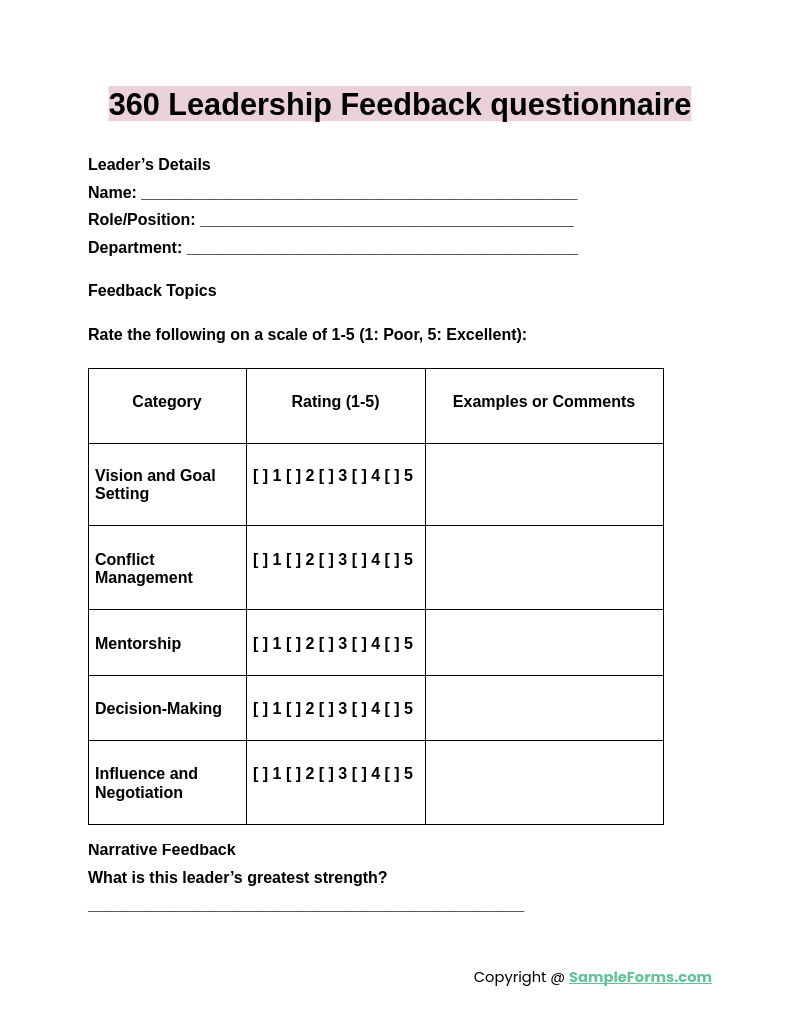
The 360 Leadership Feedback Questionnaire focuses on evaluating leadership capabilities, including vision and influence. Similar to a Guest Feedback Form, it ensures thorough and unbiased evaluations, fostering improved leadership and organizational success.
Browse More 360 Degree Feedback Forms
360 Degree Appraisal Feedback Form
360 Degree Manager Feedback Form
360 Degree Customer Feedback Form
360 Degree Performance Feedback Form
360 Degree Feedback Form Example
Staff 360 Degree Feedback Form
Free 360 Degree Feedback Form
360 Degree Feedback Form in PDF
What is a 360 degree appraisal form?
A 360 degree appraisal form is a comprehensive evaluation tool collecting feedback from peers, managers, and subordinates to assess performance. Key features include:
- Feedback Collection: Input from multiple sources, similar to a Peer Feedback Form, ensures balanced and holistic performance evaluation.
- Confidentiality: Responses remain anonymous to promote honest and constructive feedback.
- Performance Metrics: Focuses on communication, leadership, and collaboration.
- Self-Assessment: Employees provide personal reflections to compare with others’ evaluations.
- Actionable Insights: Identifies strengths and areas needing improvement for growth.
How to design a 360-degree feedback form?
Designing an effective 360-degree feedback form involves clarity, structure, and relevance to evaluate employees thoroughly. Essential steps include:
- Identify Objectives: Determine key goals, like those in a Recruitment Feedback Form, such as leadership evaluation or teamwork assessment.
- Define Competencies: Specify skills and attributes to assess, such as communication, adaptability, and collaboration.
- Create Simple Questions: Use clear, concise questions with a rating scale for easy responses.
- Include Open-Ended Sections: Allow respondents to provide specific examples or elaborate feedback.
- Test and Review: Pilot the form, gather feedback, and refine for usability.
What is the major purpose of 360-degree feedback?
The purpose of 360-degree feedback is to enhance employee performance and growth through comprehensive evaluations. Key benefits include:
- Self-Awareness: Helps employees understand their strengths and weaknesses, much like a New Joinee Feedback Form identifies onboarding experiences.
- Improved Communication: Encourages open dialogue between team members and management.
- Leadership Development: Identifies potential leaders and areas to enhance leadership qualities.
- Team Building: Promotes collaboration by highlighting interpersonal skills and dynamics.
- Performance Tracking: Provides measurable insights for consistent improvement.
What are the components of a 360-degree appraisal?
The four components of a 360-degree appraisal provide a structured and comprehensive evaluation framework. These components include:
- Self-Assessment: Employees evaluate their performance, similar to personal reviews in a Fitness Feedback Form.
- Peer Feedback: Input from colleagues offers insights into teamwork and collaboration.
- Supervisor Feedback: Managers assess performance and provide actionable insights.
- Subordinate Feedback: Employees evaluate leadership and management effectiveness.
- Developmental Goals: Establishes clear improvement areas based on feedback.
What is a disadvantage of 360-degree feedback?
Despite its benefits, 360-degree feedback has potential drawbacks that organizations should consider. Key disadvantages include:
- Bias in Feedback: Personal opinions can affect objectivity, as seen in subjective Appraisal Feedback Form responses.
- Time-Consuming: Collecting and analyzing feedback from multiple sources requires significant time and effort.
- Negative Impact on Morale: Critical feedback may demotivate employees if not delivered constructively.
- Implementation Challenges: Designing and executing an effective system requires careful planning.
- Overloading Feedback: Excessive feedback can overwhelm employees and reduce actionable insights.
How to respond to negative 360 feedback?
Responding to negative 360 feedback requires professionalism and openness. Reflect on insights to improve, similar to addressing a Property Feedback Form for actionable improvements.
What are the alternatives to 360-degree feedback?
Alternatives include one-on-one evaluations, peer reviews, and performance appraisals, much like completing a Feedback Form for Lesson tailored to specific contexts.
Should 360 feedback be confidential?
Yes, confidentiality in 360 feedback encourages honest responses and ensures unbiased insights, similar to maintaining anonymity in a Parent Feedback Form.
Who gives 360-degree feedback?
Feedback is collected from peers, subordinates, and supervisors, much like inputs gathered in a Training Feedback Form from various participants.
Which companies use 360 feedback?
Many companies, including Fortune 500 firms, utilize 360 feedback for development, much like employing a Customer Feedback Form to enhance services.
What is 360 degrees in HR?
In HR, 360 degrees refers to comprehensive performance evaluations from multiple sources, similar to a Teacher Feedback Form encompassing diverse perspectives.
What is the rule for 360 degrees?
The rule for 360 feedback involves gathering balanced, constructive inputs from multiple levels, akin to rules for organizing a Workshop Feedback Form.
What is 360 degrees symbols?
The 360-degree symbol represents completeness or a full circle, comparable to holistic insights gained from a Course Feedback Form.
How many people should give 360 feedback?
Ideally, 5-10 individuals, including peers and managers, should provide feedback, similar to diverse inputs in an Interview Feedback Form.
How long does 360-degree feedback take?
The 360-degree feedback process typically takes 2-4 weeks, akin to the structured approach in gathering a Teaching Feedback Form.
The 360 Degree Feedback Form is essential for creating a culture of continuous improvement. By gathering input from various perspectives, it ensures holistic evaluations that benefit employees and organizations. A thoughtfully designed form enhances self-awareness, teamwork, and leadership, driving better performance outcomes. Whether for development or appraisals, the Medical Feedback Form offers a framework for constructive conversations and actionable insights, fostering growth and collaboration in the workplace.
Related Posts
-
FREE 6+ Open House Feedback Forms in PDF | MS Word
-
FREE 3+ Hotel Feedback Evaluation Forms in PDF | MS Word
-
FREE 16+ Customer and Guest Feedback Forms in PDF | MS Word
-
FREE 6+ Market Research Forms in PDF | MS Word
-
FREE 3+ Feedback Observation Forms in PDF | MS Word
-
Classroom Observation Form
-
Behavior Observation Form
-
FREE 32+ Different Formats for Feedback Forms in PDF | Ms Word | Excel
-
FREE 11+ Property Feedback Forms in PDF | Ms word
-
FREE 11+ Observational Feedback Forms in PDF | MS Word
-
Nursing Feedback Form
-
FREE 10+ Feedback Forms Aimed at Doctors | PDF
-
FREE 11+ Demo Feedback Forms in PDF | MS Word
-
FREE 11+ Exam and Test Feedback Forms in PDF | Ms Word
-
FREE 10+ Medical Feedback Forms in PDF
